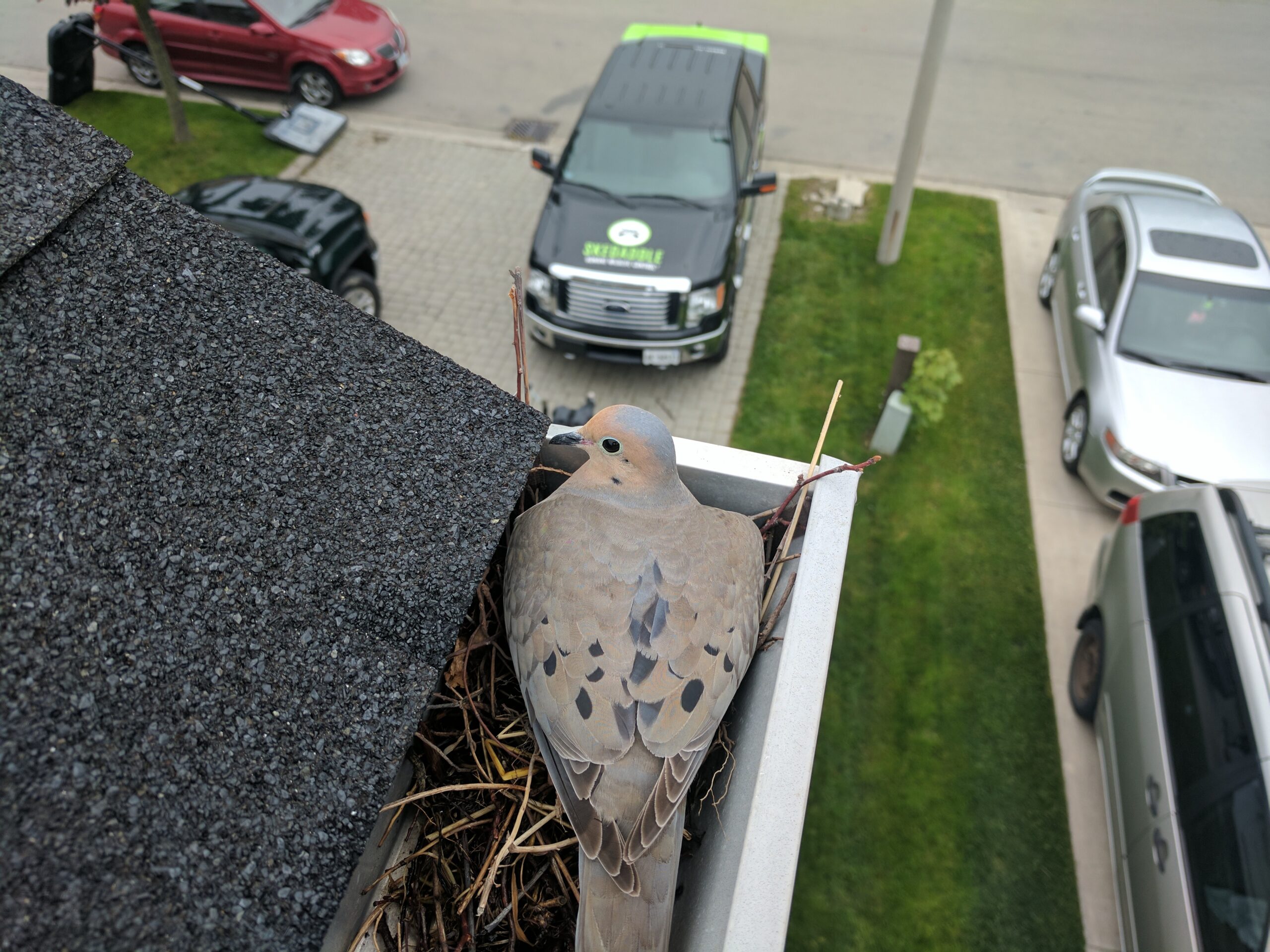One of the best sights of the spring is the return of birds. The spring migration is full of life, and it helps rejuvenate the environment. Unfortunately, with the increase in activity comes the increased risk to your household. Sometimes, it is necessary for homeowners to seek out wildlife removal in Kitchener to prevent potential roof damage.
While birds are beautiful creatures, they do not consider the harm their natural habits can bring to manufactured structures. For example, the nests of various bird species can lead to damage from water retention, airflow problems, and so much more. Additionally, bird droppings are acidic and problematic for roofing materials.
Understanding the damage a bird can cause to a roof is an essential aspect of learning preventative strategies. Primarily, all homeowners must be worried about three kinds of damage.
1. Acidic Droppings
While most people see bird droppings as a nuisance, many underestimate the potential damage such waste can cause. Bird droppings are acidic, meaning they can eat through various materials and penetrate some surfaces.
Many automobile enthusiasts understand the acidity problem because they have experienced paint staining and other issues from parking under trees or perching wires. However, many homeowners and commercial property owners do not consider the damage droppings can cause to roofs.
While some roofing materials are impervious to the acidic nature of bird waste, asphalt is not among them. Additionally, bird waste on or near other roofing elements or appliances can result in damage.
Bird droppings can also result in the growth of algae and moss. If these growths are left unattended or corrected, the roofing materials can weaken.
2. Water Build-up
Birds do not consider water flow or drainage when building their nests, which can become problematic for homeowners. A bird merely wants to find a safe place to build a home, lay its eggs, and raise its young. Unfortunately, many birds find suitable spaces in the gutters, vents, chimney stacks, etc., of houses and commercial properties.
When a bird’s nest is in a gutter or atop a downspout, it effectively prevents adequate water drainage during storms. When left with nowhere to go, the water can back up underneath roof sheathing and shingles. The build-up can result in future leaks and structural damage.
The best way to prevent the building of nests in key water flow areas is with wire mesh or similar gutter protectors. Additionally, you can call a wildlife removal expert to transfer the nest off of the structure.
3. Airflow Issues
Birds can build nests around HVAC systems or attic ventilation, resulting in airflow issues. When blocking airflow into an attic space, the area can become humid and damp, resulting in potential problems, such as mould growth. However, the block of HVAC air flows can be much worse.
When a bird builds a nest near air intake areas, nesting materials can be sucked into the system. Nesting materials often include dry grasses, cotton, twigs, bird droppings and many other flammable items. Therefore, bird nests can lead to fire hazards and safety risks. Many homes and businesses have HVAC units mounted to the roof, creating rooftop fire risks.
Have you noticed an increase in bird activity around your home? Do you see any signs of nests close to your roof or other structural components? If birds are becoming a little too friendly with your property, it might be time to contact a specialist. Contact Skedaddle Humane Wildlife Control and schedule a property assessment. A team will come out to your property and inspect it for nests or other evidence of wildlife in or around the house or structure. They will also present you with an estimate for removal services.




